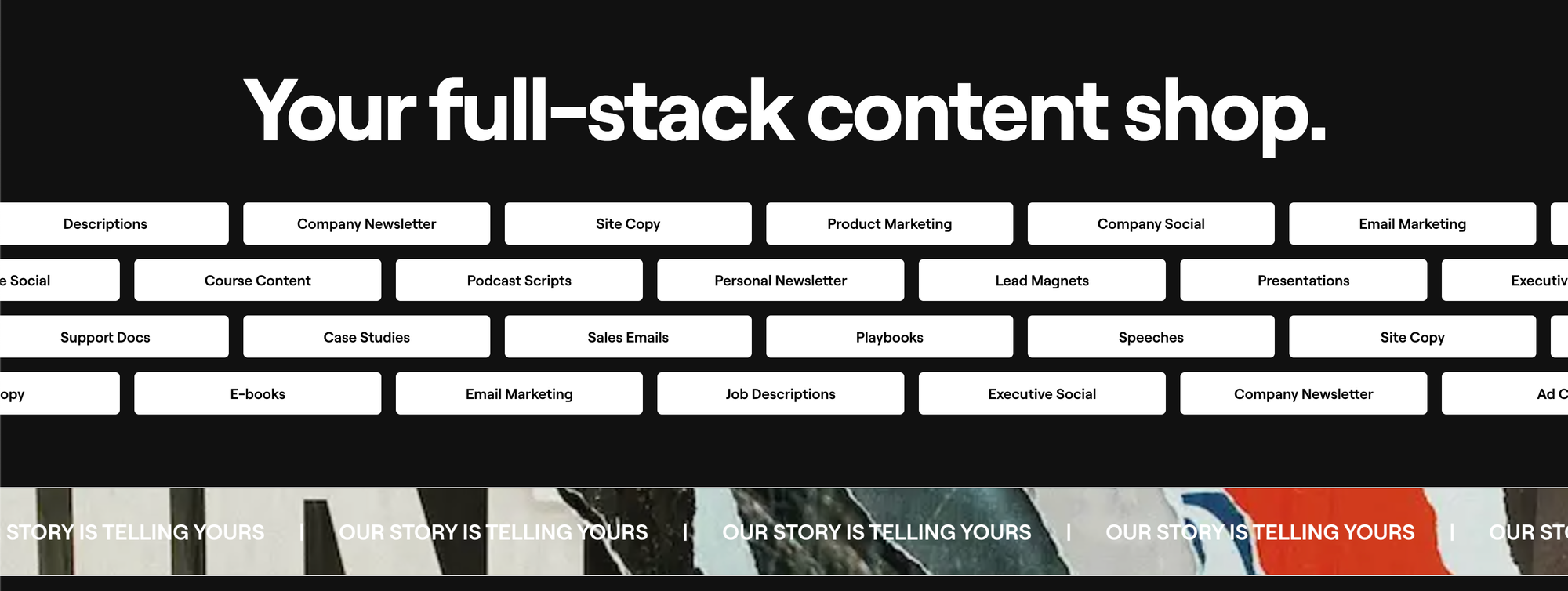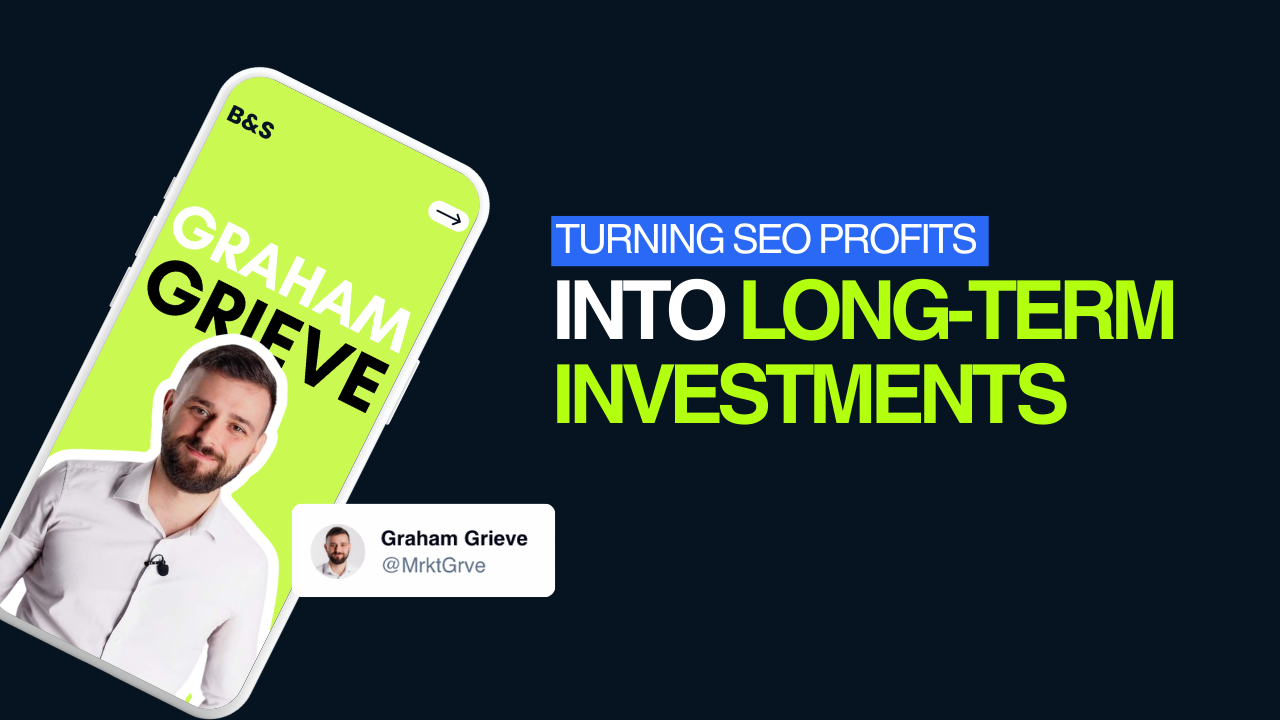Ever wonder if someone’s big success was just a fluke? Alex Lieberman made sure no one could ask that about him.
After co-founding and selling Morning Brew, he didn’t disappear into the sunset. He built his next business, Storyarb, completely in public.
Every win, every pivot, every loss, he shared it all on X. And within a year, he proved it wasn’t luck the first time by scaling his agency to $1M+ ARR.
What’s even more inspiring? He didn’t overcomplicate it.
Alex started with one clear idea and a single tweet.
Let’s break down exactly how he did it and how you can apply his strategies to your own business.
A Simple Tweet Sparked a $1M Business
Alex didn’t rely on fancy marketing or extensive planning to get Storyarb off the ground.
Instead, he validated his idea with one simple action, a tweet.
He wrote: “If you’re an executive and need help building your brand on LinkedIn or Twitter for $5K-$10K a month, DM me.”
The response was immediate - 25 direct messages from high-level executives in just a few hours.
Without a formal business or website, Alex had confirmed there was real demand.
If the following apply to you DM me:
— Alex Lieberman (@businessbarista) March 21, 2023
✅ you're a founder/exec
✅ you believe deeply in building personal brand
✅ you don't have the time/skill to create content & grow your brand
✅ you'd pay $5-10,000 per month to have a skilled content creator build your personal brand
From that moment, Storyarb was born, and it has been growing ever since. This low-cost, no-frills approach allowed him to test his concept and attract clients before spending time or money on building out operations.
It was proof that sometimes, all it takes is a clear offer and a simple call to action to get the ball rolling.
Let’s dive deeper into the actionable strategies Alex used to scale Storyarb into a million-dollar business.
Want to Scale Like Alex Lieberman? Here’s How He Did It
1 - Be a Magnet for Problems 🧲
Alex didn’t sit in isolation trying to brainstorm startup ideas.
Instead, he immersed himself in industries he was passionate about and became a magnet for problems.
He identified an underserved market: executives who needed help with personal branding on text-based platforms like LinkedIn and Twitter.
Clearly Alex is a guy with a million ideas.
If you follow him on Twitter you’ll see he posts a business idea every other day.
So drop him a follow if you're looking for some inspiration :)
Call for co-founder.
— Alex Lieberman (@businessbarista) September 12, 2023
8 business ideas I could be convinced to build.
1) Supercharged workflow agency (automation, offshoring, AI)
2) Sales-as-a-service (qualified SDR agency)
3) Public speaking school for founders/execs (Toastmasters 2.0)
4) AA for tech addiction
5) Drybar…
How can you do the same?
Here are a few ideas:
- Join industry-specific groups where your target clients discuss their challenges. Look for recurring themes or complaints
- Keep an eye on industry reports, podcasts, and blogs to identify common gaps that are not being addressed.
- Engage with the community and get out into the world. For me, the novelty of traveling often sparks creative ideas. New environments challenge your perspective and force you to think differently. Combine this with meeting people at events, and you’ll rarely find yourself stuck wondering what to do next.
2 - Validate Demand Before You Build
Alex didn’t rush to build infrastructure.
Instead, he tested his idea with a simple tweet, validating demand before committing any capital or resources.
In fact, he did this a few times.
This scrappy validation gave him confidence that there was a market for his service.
3 - Start Scrappy
While many would complicate things early on, Alex kept it lean and focused.
It’s important to note that Storyarb today looks very different from its early MVP days.
The business now offers a wide range of content types, but starting that way would have slowed them down significantly.

I’ll dive into why Alex eventually diversified later, but one thing is clear: the first year was a huge success by keeping things simple.
The key takeaway?
Don’t overcomplicate your MVP. Focus on solving the core problem—in this case, connecting top talent with clients—and only scale once the model is proven.
By staying streamlined in the early stages, Alex was able to iterate quickly and grow Storyarb into a profitable business without unnecessary complexity.
How can you do the same?
- Start with free or low-cost tools like Slack, Trello, or Google Sheets to manage client work instead of investing in expensive project management systems early on.
- Offer a Single Core Service: Focus on one core offering (like ghostwriting for executives) instead of trying to diversify right away. This keeps your process streamlined and manageable.
- Use Freelancers or Contractors: Rather than hiring full-time staff from day one, rely on freelancers for content creation or admin tasks until you have a steady stream of revenue.
- Avoid Fancy Marketing: Skip the complex branding and website builds. Use your social media presence to drive early sales and engagement. (I’m seeing a lot of people have success with Google doc sales letters now)
4 - Bootstrap to Build Early Revenue
In the early stages, Alex did not focus on profit.
He passed along the exact rate ghostwriters charged to the clients and sat in on Slack conversations between them, learning and refining how to improve operations and client satisfaction.
This is a tactic Joe Davies also uses to launch new businesses. (read his interview here)
Lesson: In the early days, prioritise learning and building processes over maximising profitability.
This allows you to build a stronger foundation for future growth.
5 - Identify Your Strengths and Find Complementary Partners
A key part of Alex’s execution with Storyarb was recognizing that his strengths weren’t in daily operations.
His expertise lies in vision, strategy, and creating impactful content.
Alex knew he could build a brand and connect with an audience, but scaling the operations?
That’s where he needed help.
To address this, Alex brought in a co-founder whose skills complemented his own.
He hired a CEO to manage the day-to-day, allowing him to focus on strategy and content creation.
Instead of rushing the decision, Alex tested the fit by hiring the CEO as a freelancer first, ensuring the partnership worked on both sides before making it official.
I personally really like the freelance-to-hire model, it removes a lot of risk.
This deliberate partnership allowed Alex to offload operations to a skilled leader while he stayed focused on his zone of genius—driving growth through creativity and vision.
How can you do the same?
- Evaluate Your Weaknesses: List out the tasks you struggle with or don't enjoy, and start looking for freelancers or partners who excel in those areas (e.g., hire someone to handle day-to-day operations).
- Test Collaborations: Try working with freelancers on a per-project basis before committing to any full-time hires. This will help you identify complementary partners.
- Freelancer-to-Hire Model: Like Alex, start by hiring people as freelancers before making them full-time. This ensures you have the right fit without risking a long-term commitment too early.
- Delegate Strategically: Begin by offloading smaller, repetitive tasks to freelancers, and gradually delegate larger responsibilities as you scale.
6 - Optimise for product market fit
From day one, Alex set clear benchmarks for Storyarb’s product-market fit:
- Client Referrals: 50% of clients should recommend the service.
- Client Retention: He aimed to extend client retention to 10 months, a huge jump from the industry average of 3-5 months.
Alex’s X account is an absolute gold mine but did you know he has a podcast?
Check it out.
What's cool is he calls his shots. If you want to see his marketing plan, it's there, public, right on his X account.
7 - Refine the Offering and Focus on Core Value
After initial success, Alex and his team shifted from personal branding for executives to a more comprehensive content subscription model for companies.
They recognized that while personal brand content was a nice-to-have, companies had far more pressing content needs.
So Storyarb broadened its offerings beyond ghostwriting for executives, evolving into a full-stack content service.
They offered everything from newsletters and social media content to blog posts and internal communications, helping marketing teams fill their content gaps.
Alex faced criticism from some in the industry, who believed the shift to offering such a wide range of services was risky and unfocused.
People argued that it was better to specialize in one or two types of content, become highly efficient, and build internal systems around that niche, rather than attempting to do everything for everyone.
Critics like Nicolas Cole voiced concerns, calling the move a "huge mistake," while others like pointed out the challenge of context switching, arguing that it’s tough to maintain high quality across multiple content types.
Here’s an interesting take on his strategy here:
Despite the criticism, Alex's pivot to a broader offering was rooted in understanding his clients' evolving needs and assembling a team of absolute killers to execute on that vision.
Each team member brings a specialized skill set, creating a powerhouse of expertise that can step in and advise where needed. While managing such a diverse team is operationally challenging, hiring the best of the best makes it far easier to maintain high-quality output across multiple content types.
The lesson here? Bold moves often draw criticism, but when grounded in real market demand, they can unlock opportunities others might overlook.
Whether you choose to specialize or diversify, the key is staying laser-focused on delivering value where it’s needed most.
After all, success isn’t about pleasing everyone...
... it’s about solving the right problems for the right people.
PS. Alex, if you’re reading this—thank you for the free education you share with us every week. Your journey isn’t just inspiring; it’s a masterclass for anyone building something from scratch.
If you enjoyed this breakdown of Alex Lieberman’s success, you won’t want to miss next week’s post:
From Fast Money to Lasting Wealth: How Graham Grieve Turns SEO Profits into Long-Term Investments.
We’ll cover:
- How Graham boosted his agency’s profit margins without sacrificing quality.
- The exact steps he took to reinvest profits into high-yield investments, like property.
- His FB ads strategy
- Why financial discipline built his £1M property portfolio.
- The mindset shifts Graham made to transition from short-term gains to long-term wealth.







